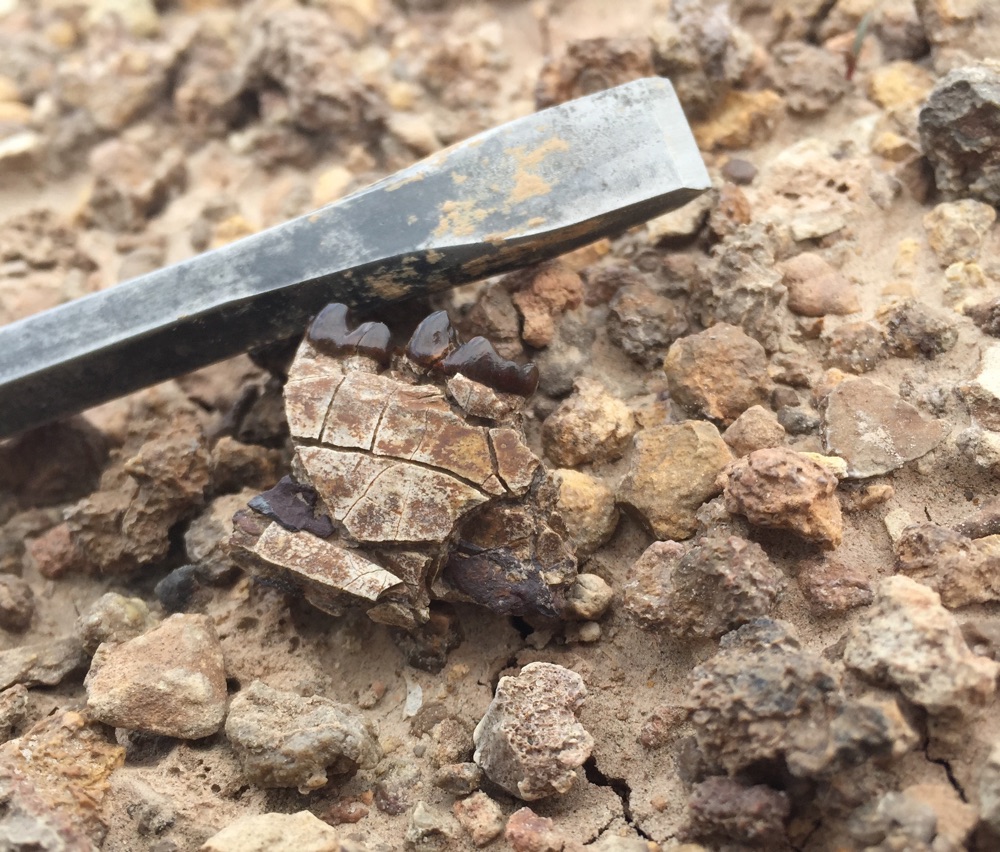Mammals Shrank During Ancient Global Warming Event

Between 56 million and 53 million years ago, Earth experienced a series of extreme global warming events that radically altered life on the planet.
During the first event, the Paleocene-Eocene Thermal Maximum (PETM), carbon levels spiked and temperatures increased as much as 8 degrees Celsius (14.4 degrees Fahrenheit). A second event, known as the Eocene Thermal Maximum 2 (ETM2), occurred two million years later and led to global temperature increase of about 3C (5.4F).
The ETM2 temperature increase might sound familiar. It's roughly the level of warming scientists suggest we may see if governments around the world don't de-carbonize their economies by reducing the amount of fossil fuel emissions they pump into the atmosphere.
One of the effects of those extreme climate changes millions of years ago was the dwarfing of mammals. New research, published in the journal Science Advances, suggests that not only do warmer temperatures shrink the body size of mammalian species, but the warmer it gets, the bigger the change.
The researchers, led by Abigail R. D'Ambrosia of the University of New Hampshire, examined the fossilized teeth of four different mammal types found within the Bighorn Basin of Wyoming, which lies about 100 miles east of Yellowstone National Park.
"We went out in the field every summer for several years and collected fossils," she said. "It turns out that, just like in humans, all mammals have this shiny, outer layer of our teeth, which is tooth enamel. And that stuff is really resistant to weathering and erosion over millennia, it turns out. So teeth tend to last longer than bone material out there. So we find a lot of fossil teeth out in the Bighorn Basin."
Tooth size also happens to be a great proxy for body size in mammals.
Sign up for the Live Science daily newsletter now
Get the world’s most fascinating discoveries delivered straight to your inbox.
RELATED: US Physicians Urge Action on Climate Change, Say Health Problems Are Rising
What D'Ambrosia and her team found was significant. Not only did they see the dwarfing in two of the four mammals they were concerned with, they determined that the magnitude of dwarfing correlated to the magnitude of the climate extreme when it was contextualized with prior research on carbon and temperature increases in the deep past.
Previous research on Arenahippus pernix, an early horse, found dwarfing during the PTEM. D'Ambrosia and her team also found dwarfing in the species, but on a smaller scale during the less extreme ETM2.
"We find dwarfing, and we compare our horse to the PTEM horse, we see that dwarfing does seem to correlate to the magnitude of the event," she said. "So ETM2: Not as extreme as PTEM, and we see less dwarfing."
It's not clear, she added, if the body size decrease was due to temperature rise, increased carbon concentrations, or both.
"Nevertheless, it has to do with this change in the atmosphere, for sure," she said.
In addition to seeing dwarfing in Arenahippus pernix, the team also saw a statistically significant decrease in Diacodexis metsiacus, a rabbit-sized artiodactyl.
They found a non-significant increase in body size of 2 percent in Hyopsodus simplex, an early hoofed animal with a weasel-like body.
In Cantius abditus, an early primate similar to modern lemurs, fossil measurements revealed a slight decrease in body size, although also not statistically significant.
"The interesting thing with Cantius is, if you take a step back and look over time, Cantius was gradually increasing over hundreds of thousands of years," she said. "So we think that could have dampened the true decrease in body size during the ETM2 interval."
Several theories explain changes in body size during periods of higher levels of carbon dioxide in the atmosphere and higher temperatures. The prevailing theory argues that animals in higher latitudes generally have smaller body sizes because it allows them to more efficiently release body heat in the relatively warmer temperatures closer to the equator. Another explanation suggests that higher temperatures and drought could diminish overall plant growth and reduce the amount of nutrients available for animals.
RELATED: A Supercharged Hunger for Carbon Pollution in Plants Could Fight Climate Change
Research of the deep past often offers only tangential connections, if any, to the here and now. But if researchers like D'Ambrosia are finding such radical changes in mammals during extreme climate changes millions of years ago, how might similar climate extremes by altering species today?
Keep in mind that the temperature increase during the PTEM occurred over a time scale of roughly 10,000 years. In contrast, today's human-caused climate change is happening on a much more rapid timescale, perhaps 10 times as quickly, according to a study published last year in the journal Nature.
"If we're going at 10 times the rate as then, what concerns me is whether there's enough time this time around for animals to adapt the way they did then," D'Ambrosia said.
Animal species changed during big swings in climate, she noted, but rarely went extinct.
Today, extinction rates are ramping up. Hundreds of threatened mammal species are affected by climate change, according to a paper in Nature Climate Change, and scientists say it has already caused at least one mammal to go extinct — the Bramble Cay melomys, a small rodent that was the Great Barrier Reef's only endemic mammal, which was wiped out by rising sea levels.
"We're in a little bit of a no-analog situation," said D'Ambrosia.
Original article on Seeker.









